Sonic Frontiers and the "3D Curse"
The era of terrible 3D Sonic games could be coming to an end
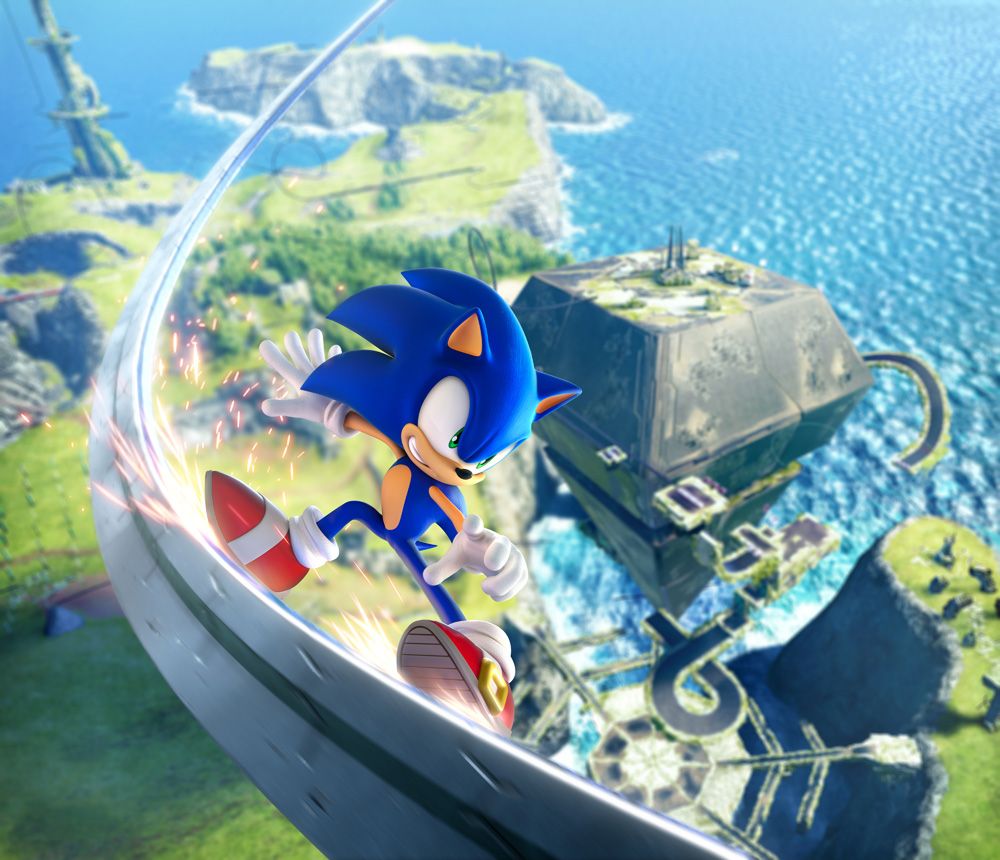
The 3D Sonic games suck. Can we all agree on that? Okay, great, my work here is done. Thanks for reading. 👋
...on second thought, that statement might require just a little qualification. A few qualifications, actually. First of all, the way you think about Sonic the Hedgehog as a franchise is going to depend heavily on when you were born. If you grew up playing the 3D Sonic games (I'm specifically counting Sonic Adventure onwards), then you may have found my opening salvo nothing short of blasphemous. However, if you grew up with the 2D Sonic games, then you likely already know where I'm coming from, hyperbole aside. Age isn't the only qualification though. Sonic Adventure was an ambitious and highly consequential Sonic game that led to what I'd classify as a series of experiments with Sonic over the last couple of decades. And while I think those experiments largely failed, there were certainly occasional flashes of brilliance; glimpses of the potential of a 3D Sonic experience.
The end of last year saw the release of Sonic Frontiers, a game that sought to put 3D Sonic games on a new path. Now that the dust has settled and I've had some time to sit with the game, how does it fare? Does it really solve the problems it needed to solve? Before I answer those questions, I think it's worth taking a step back and thinking about what Sonic the Hedgehog is as a game, and why the 3D iterations struggled to present a coherent and compelling evolution of the franchise so far.
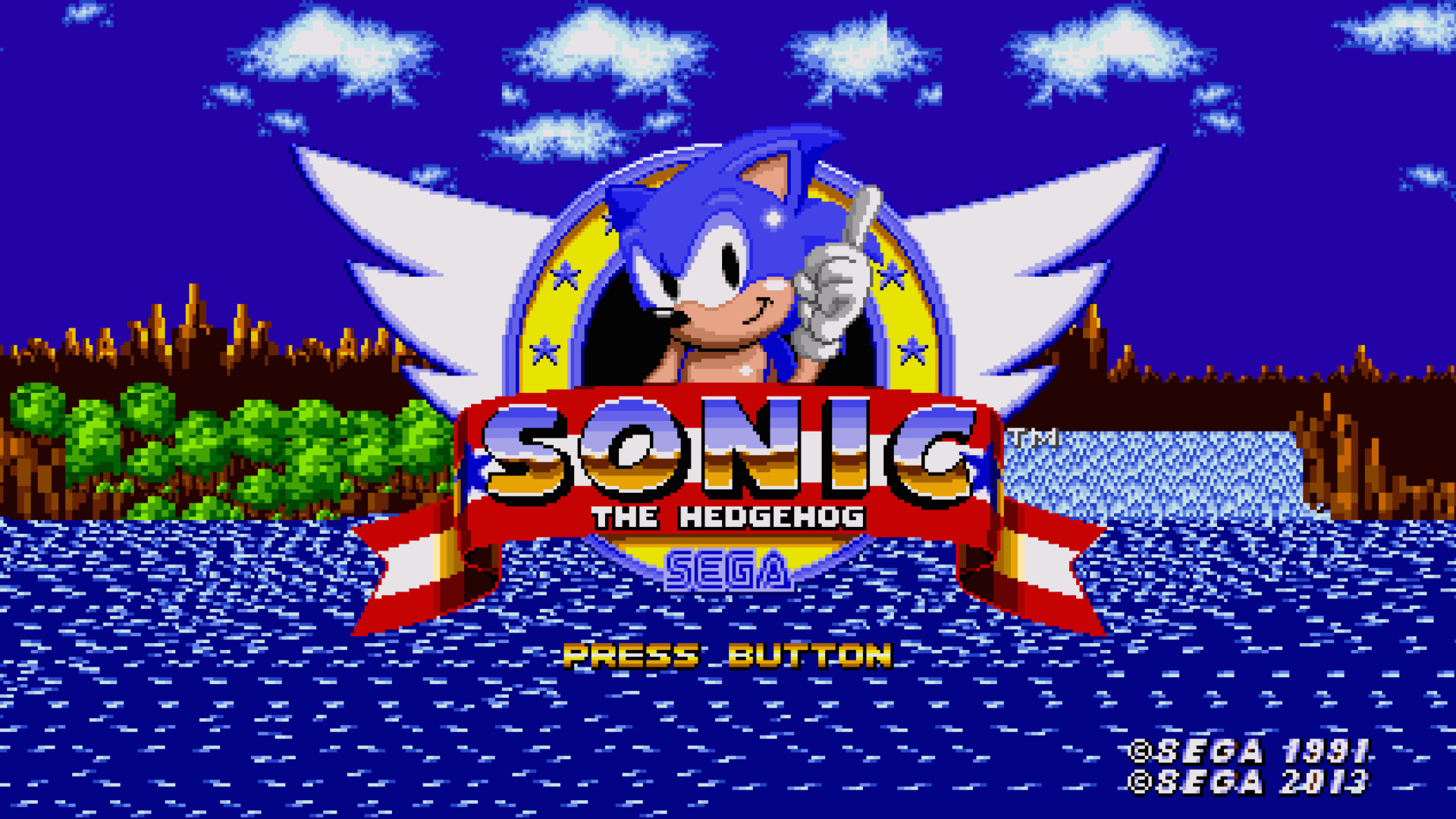
Sonic Adventure was an ambitious and highly consequential Sonic game that led to what I'd classify as a series of experiments with Sonic over the last couple of decades. And while I think those experiments largely failed, there were certainly occasional flashes of brilliance; glimpses of the potential of a 3D Sonic experience.
Blast processing
Sonic the Hedgehog was released in 1991 for the Sega Mega Drive (Genesis in North America). If you're reading this, it's very likely you already know Sonic very well, so I don't need to explain the premise. I will say, though, that Sonic the Hedgehog was a landmark game for Sega in two ways. First, it gave the company a popular mascot character who could compete with Nintendo's Mario (and there's no question that Sonic the Hedgehog is largely responsible for catapulting Sega and the Mega Drive to massive commercial success in the early '90s). Second, Sonic was a highly innovative video game in and of itself. Born from an earlier tech demo created by Yuji Naka, Sonic the Hedgehog was based on an algorithm written by Naka that enabled a sprite to move along curved surfaces (this was achieved by continuously determining the sprite's position via a dot matrix).
Nintendo's Mario had three core movements that underpinned all in-game interactions (walk left, walk right, jump). These core movements were complemented by a generic 'action' command that gave rise to increasingly complex emergent behaviours (for example, holding the B button in Super Mario Bros. enables Mario to run, and it can be pressed to shoot fireballs after touching a fire flower). Over time, Mario games incorporated more complex interactions that were still largely based on the core movement mechanics (for example, Mario's ability to lift and throw objects in Super Mario Bros. 2, where these actions are still dependent on the context-sensitive 'action button').
Like Mario, Sonic's in-game behaviours were based on a simple set of fundamental interactions. But Yuji Naka's algorithm enabled the developers to create a novel experience that diverged greatly from Mario in several key respects. Like Mario, Sonic could walk left and right. He could also jump. But rather than relying on a dedicated run button, players could simply hold a left or right direction on the d-pad and Sonic would gain speed over (roughly) a second or less; he would transition from a slow walk into a full sprint on what felt like a linear acceleration curve. If the player tapped the down arrow on the d-pad while Sonic was moving, he'd curl into a ball that retained the same velocity. In the later games (I'm thinking Sonic the Hedgehog 3 in particular), Sonic would also gain additional moves as he acquired certain power-ups (much like Mario), which slightly added to the game's mechanical complexity. It is commonly accepted that the Sonic games are all about speed, but I'd say this isn't quite true (despite Sega's early '90s marketing). To be specific, I think the Sonic games were less about speed and more about momentum. Let's take a moment to explore this in a little more detail.
Full playthrough of Green Hill Zone by Miggy on YouTube.
Like Mario, Sonic's in-game behaviours were based on a simple set of fundamental interactions. But Yuji Naka's algorithm enabled the developers to create a novel experience that diverged greatly from Mario in several key respects.
Here's a playthrough of Green Hill Zone, which contains the first level of Sonic the Hedgehog. As you watch this video, put speed out of your mind and instead think about momentum. You'll notice that the level design cleverly encourages continuous momentum through the strategic placement of rings, ramps/loops, and enemies. There are plenty of obstacles that deliberately slow Sonic down, or create abrupt stops. Achieving longer and longer stretches of continuous momentum involves re-playing these levels repeatedly so that you can anticipate and avoid obstacles. I also find it interesting that Sonic levels are subtly stratified. To better understand this, imagine running two horizontal lines over the screen. You'll notice that, in general, there are two horizontal paths (upper and lower).
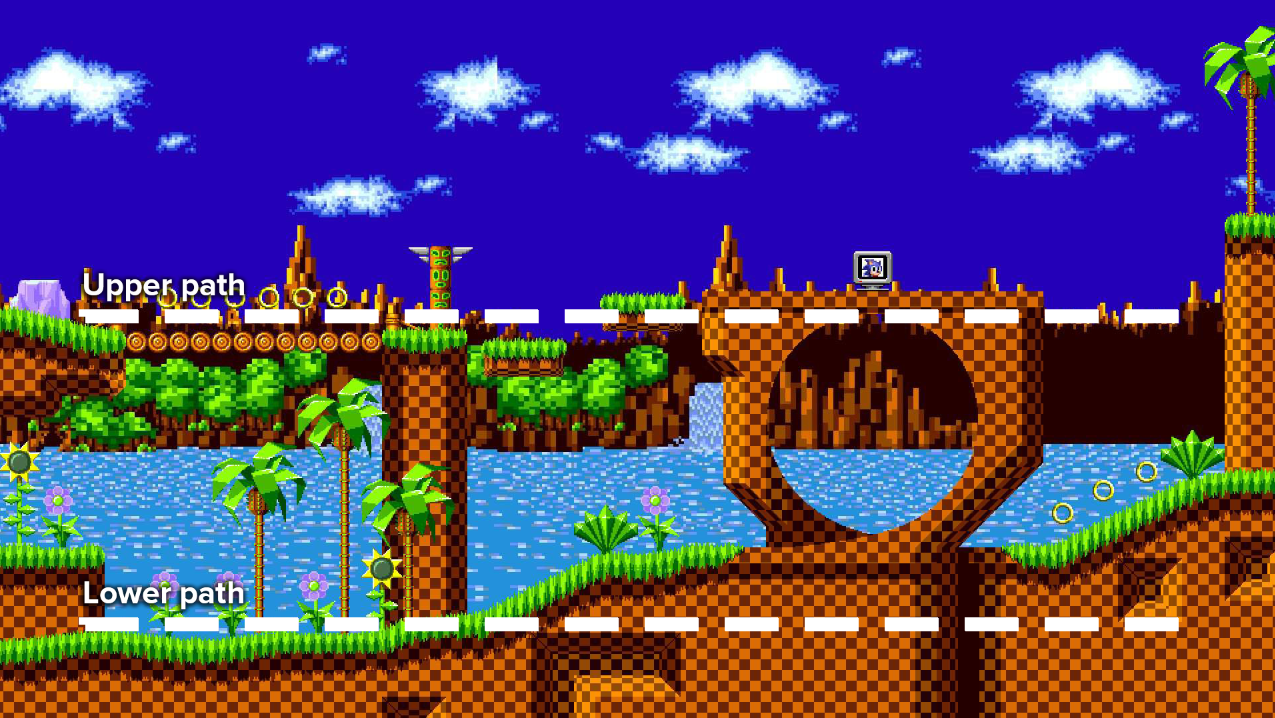
The lower path is the "default" path; it's the path you'll take if you simply run to the right from the beginning, with some obstacles in the way. The upper path involves much more jumping between platforms and enemies, with a more frequent risk of falling; it's more challenging for this reason, but it's also more rewarding because most of the power-ups are located on this "upper path." In a typical playthrough, you'll probably find yourself oscillating between these upper and lower paths. More recent 2D Sonic games - like Sonic Mania - increase the complexity by including three horizontal paths on most levels. Importantly, Sonic Mania increases the complexity while still adhering to the fundamental momentum-based mechanics of the older 2D games.
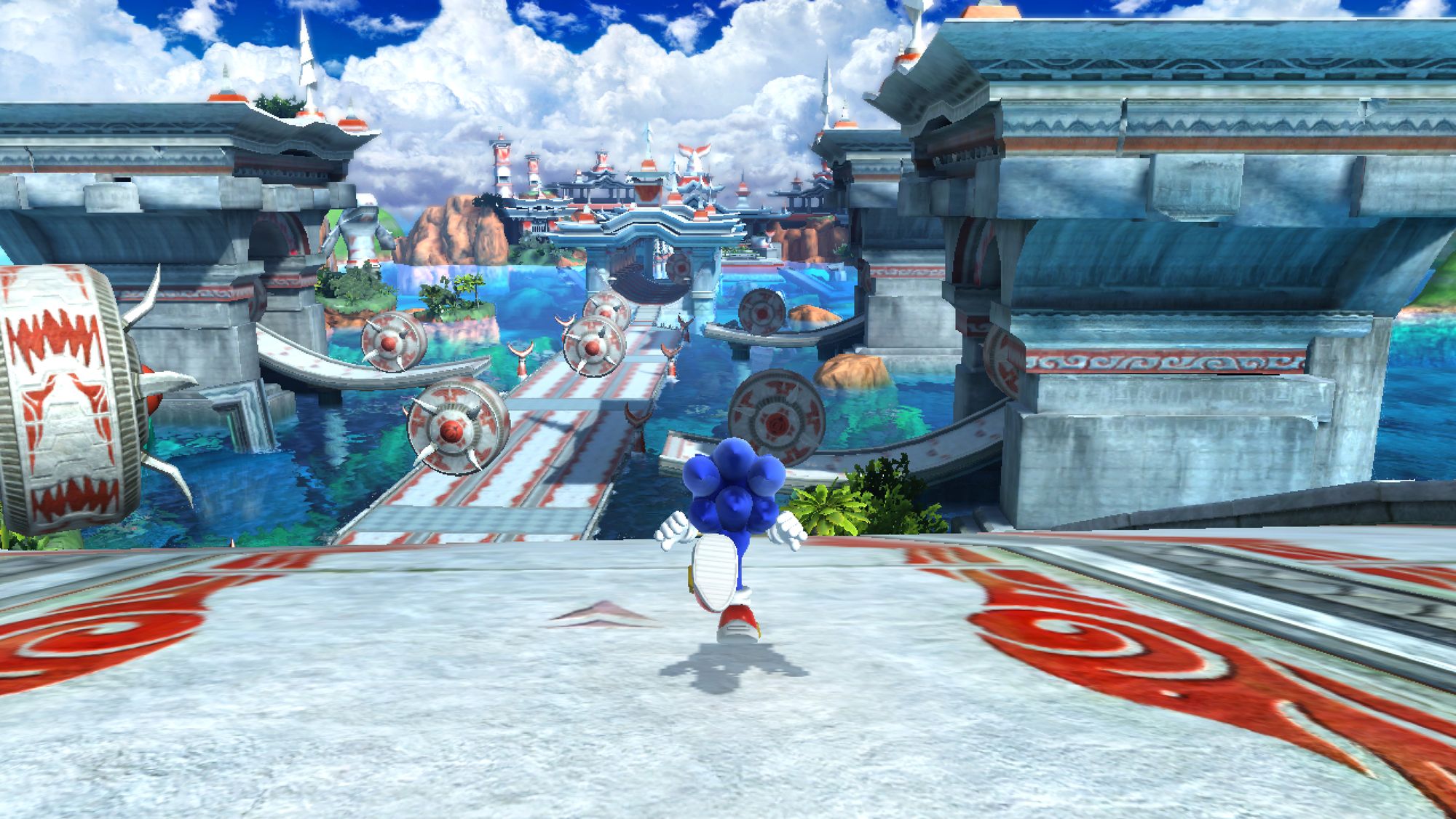
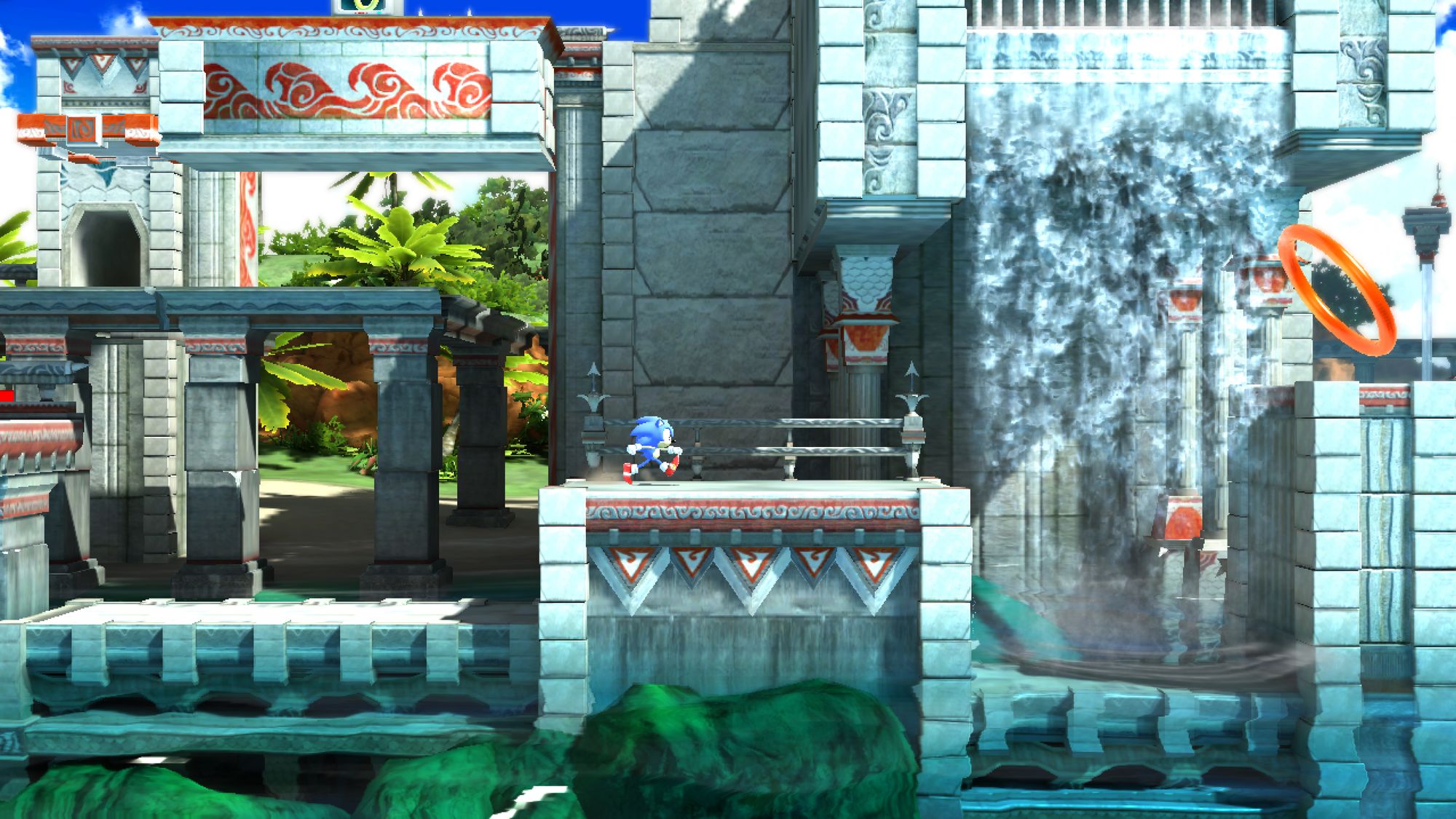
Sonic Generations introduced two kinds of 3D gameplay ("modern" pictured left and "classic" pictured right). Source: Sega.
Crossing the Rubicon
The mid-90s represented the riskiest moment for the games industry since the video game crash of 1983. Console manufacturers were shifting from machines that rendered 2D sprites to highly complex platforms that were capable of rendering 3D polygon-based graphics. This shift presented obvious challenges: development teams needed new skills, and the cost of development began to rise sharply. But it wasn't just a question of producing 3D images and animation; game developers had to figure out how to design gameplay systems in 3D spaces. This was no trivial task. How should players manipulate characters in a 3D space? Mechanics as simple as walking and jumping had to be completely re-imagined from the ground up for a 3D context. The old rules had to be completely thrown away and replaced with an entirely new game design language.
As you might expect, not every company survived the blunt force trauma shift from 2D to 3D. Atari - a company that had once dominated the games industry but had begun to lose ground in the late '80s to Nintendo and Sega - collapsed under the weight of the transition, its expensive 3D-capable Jaguar console failing to make any significant impact on the market. On the other end of the spectrum, companies like Nintendo thrived by quite literally writing the rulebook on designing games in 3D. Super Mario 64 was not merely "Mario in 3D". It was a complete reinvention of Mario from the ground up for the 3D world. Every aspect of the game, from its core mechanics to its level design, was sculpted specifically for a 3D context.
What of Sonic, then? Well, if you were a Sega fan during the mid-90s, then you already know the answer. The Sega Saturn was certainly a 3D-capable machine, and Sega produced a number of outstanding games for it. But Sonic was largely absent, except for oddities like Sonic 3D Blast (not a true 3D game, but a 2D isometric experience originally designed for the Mega Drive) and Sonic R (not a Sonic platformer per se, but an on-foot "racer" experience). To put it in simpler words: we had Super Mario 64, but where was our "Sonic 64" moment? We didn't get one on the Saturn.
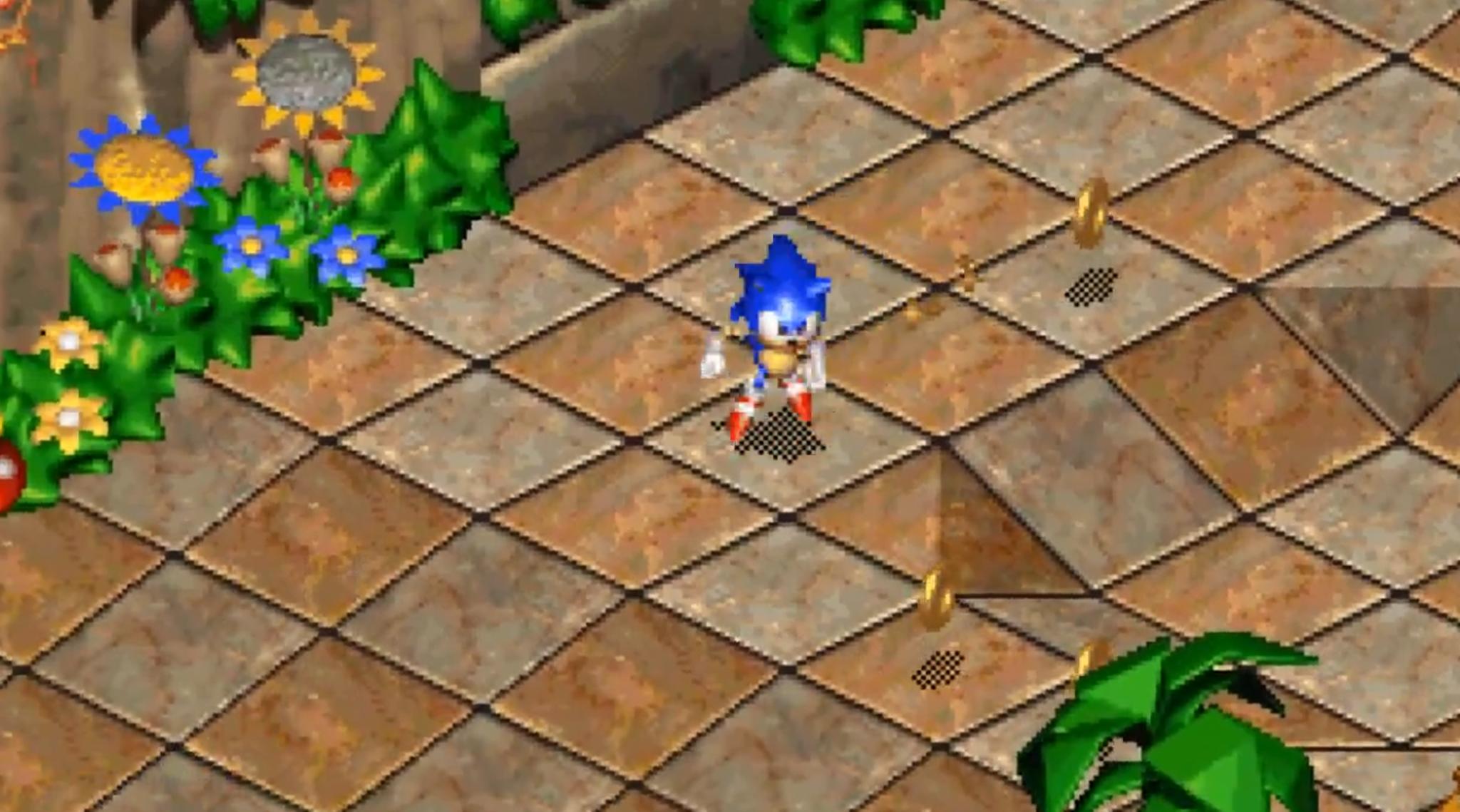
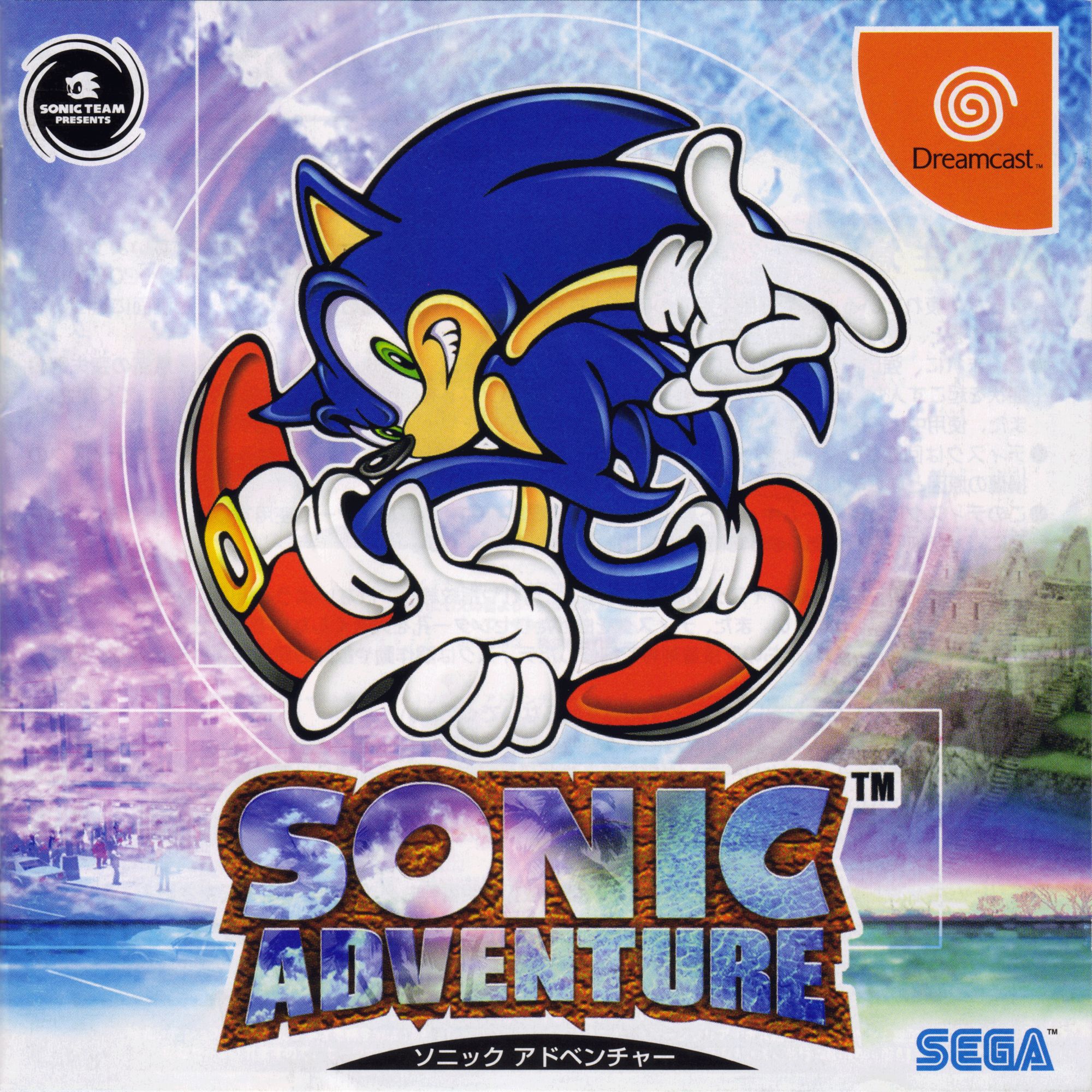
Adventure time
It wasn't until the launch of the Sega Dreamcast that we finally had a true 3D Sonic experience. Sonic Adventure was arguably the most important game for the Dreamcast. It not only marked Sonic's debut in 3D, but it also ushered in the next generation of gaming. Sonic Adventure was well-received upon launch, and it demonstrated great promise for the future of the franchise in 3D.
Unfortunately, the road Sonic Adventure paved has been nothing short of a bumpy one, to put it mildly. The Sonic Adventure games were Sonic's first real 3D outing, and I'd argue they are - so far - the best 3D Sonic games. In subsequent years, Sonic Team and Sega have seemingly thrown everything at the wall in an attempt to capture lightning in a bottle once again. But even when they came somewhat close (I see you, Sonic Generations), they never quite matched the Sonic Adventure games in terms of successfully transitioning the Sonic gameplay experience into 3D.
As a Sonic fan since the beginning, I'd say that even Sonic Adventure doesn't really stick the landing either. It felt like a statement of purpose; a demonstration of what 3D Sonic could be. But even Sonic Adventure is filled with a wide range of ideas that range from curious to outright boring. Where the Sonic and Tails stages are reasonable 3D approximations of the 2D Sonic experience, there are other stages (for example, Amy and Big the Cat's stages) that don't belong in a Sonic game (and, as far as I'm concerned, don't belong in any self-respecting platformer).
So, let me be clear: I would happily take Sonic Adventure and crop out everything that isn't one of the Sonic or Tails stages.
The resulting experience might be much smaller in scope, but it'd actually be a "true" 3D Sonic game, rather than a confused mish-mash of concepts that were probably better left on the cutting room floor.
Footage of all the Sonic levels in Sonic Adventure by CliffTurbo on YouTube.
As a Sonic fan since the beginning, I'd say that even Sonic Adventure doesn't really stick the landing either. It felt like a statement of purpose; a demonstration of what 3D Sonic could be.
Even if we isolate the Sonic and Tails stages, we're left with something that feels like a first attempt to translate the 2D Sonic experience into three dimensions. Sonic Adventure 2 builds on these concepts in ways that make a lot of sense (for example, the high-speed rail grinding in Sonic Adventure 2 feels like a natural addition to the formula), but it also falls victim to this tendency to throw many under-developed ideas at the wall to see what sticks. Knuckles' "treasure hunting" stages are slow, tedious, and entirely unfun. This isn't just a question of the game not ageing well, either; I distinctly remember wishing I could skip past these experiences on my very first play-through at launch.
Since the Sonic Adventure games, the Sonic franchise has never found solid ground, at least when it comes to its 3D iterations. Some games - like Sonic Colours - leaned into the concepts that worked well in Sonic Adventure, to some degree of success. Others, like 2006's Sonic the Hedgehog, attempted to 'reboot' the 3D series. Conceptually, it was a pale imitation of Sonic Adventure's already-shaky approximation of 2D Sonic. That it was also a completely unpolished mess of a product was really the nail in the proverbial coffin. Of course, these are not the only 3D Sonic games that ever existed, but I'd argue none of Sonic's 3D adventures have turned out to be truly compelling. To come back to my original point: Sonic has not yet had his Super Mario 64 moment, even after more than twenty years of trying.
It's worth pointing out that what I've said so far isn't quite the criticism of Sonic Team that it may appear. It's true that bringing Mario into 3D was enormously challenging for Nintendo, a company with both massive financial resources and arguably the most talented game developers on Earth. There are many elements of Sonic's 2D design that I'd argue are, in principle, inherently difficult to translate effectively into 3D. For example, how do you marry up 360-degree character movement with high speed? How do you build levels around that kind of movement? How do you manage a third-person camera in this context? I don't think any of these questions have easy or simple answers.
It's clear that the Sonic Adventure games tried valiantly to tackle these questions using various key design principles. For example, 360-degree movement is somewhat curtailed; while the stages are technically 3D, the player is usually moving forward or sideways across a well-defined path. Some particularly difficult design challenges - like navigating Sonic through huge 3D loops at speed - are side-stepped by essentially taking direct control out of the player's hands (using boost pads that automatically navigate Sonic through these segments). You'll notice that in Sonic Adventure, the only times where you have "full control" over Sonic and are able to navigate around in true 360 degrees, are the points where the action slows down significantly (and even then, Sonic Team implemented a 'homing' mechanic to make it easier to 'hop' from enemy to enemy across a 3D space).
From my point of view, the important thing here is that the design principles I'm talking about feel like concessions or compromises to enable a playable experience that limits unnecessary player frustration. The game "works" mechanically to the extent that it takes control away from the player. Speed and player control are mutually-exclusive zero-sum equations; if you want more speed, you get less player control. If you want more player control, you get less speed. See what I mean? These decisions make the game "work", but they don't actually succeed in translating the 2D Sonic experience into 3D.
Until late last year, I was convinced that Sonic Team, after more than two decades of attempts, was actually incapable of delivering a 3D Sonic experience that lives up to the 2D iterations. But after playing Sonic Frontiers, I'm not so sure. There just might be light at the end of the tunnel.
New frontiers
Sonic Frontiers was released in November 2022. It represents yet another reboot of the 3D Sonic experience. But this time, I think Sonic Team have landed much closer to the bullseye. They didn't quite nail the landing, but there's a ton of potential here. If you're like me and find yourself giving up on 3D Sonic games, then I urge you to give Sonic Frontiers a go. You might be surprised.
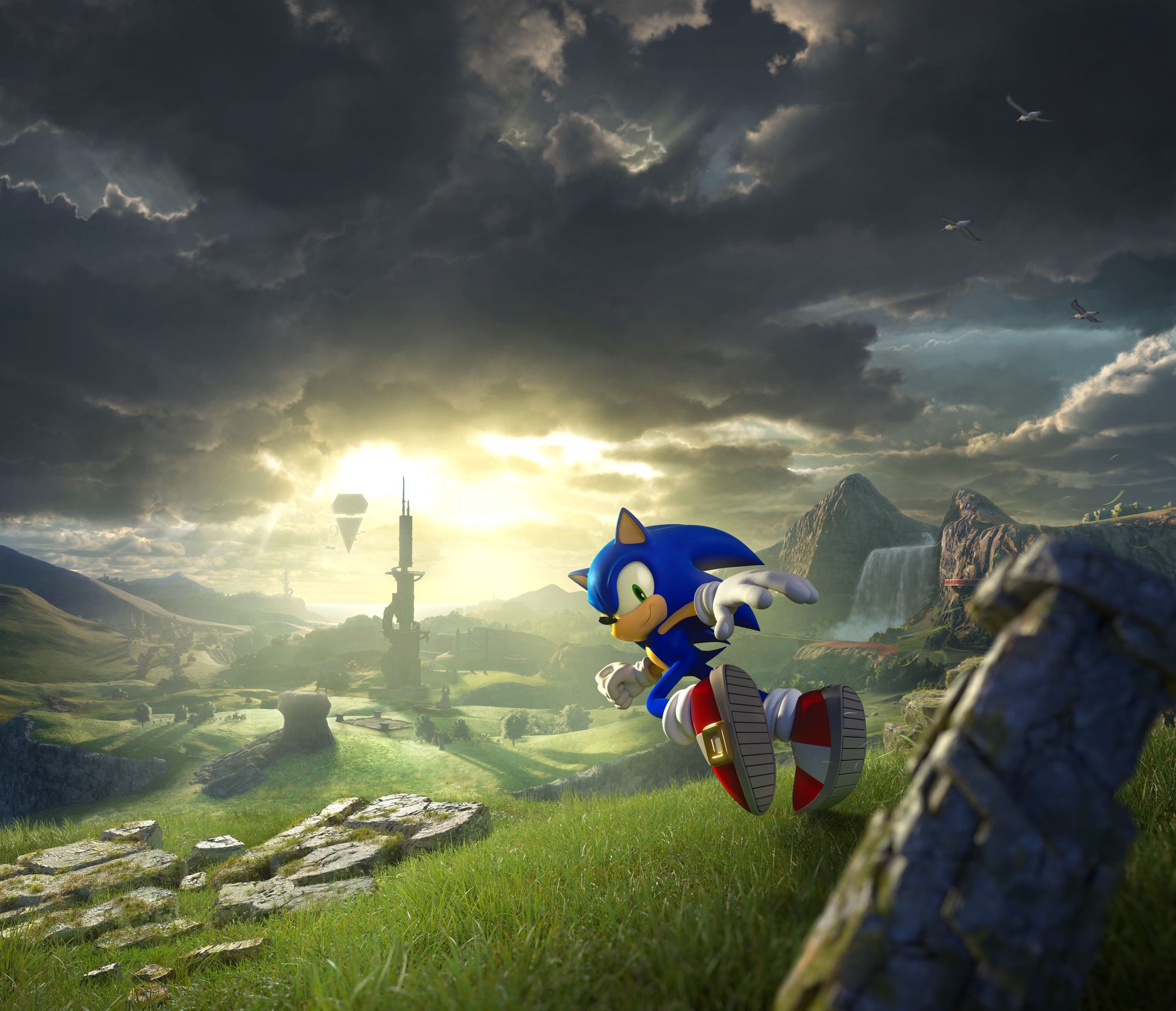
Until late last year, I was convinced that Sonic Team, after more than two decades of attempts, was actually incapable of delivering a 3D Sonic experience that lives up to the 2D iterations. But after playing Sonic Frontiers, I'm not so sure.
By now, you are probably at least somewhat familiar with what Sonic Frontiers is. If not, I recommend checking out the IGN review, which will give you a pretty good sense of what Sonic Team have aimed for here. IGN is more forgiving of this game than I am; there are numerous gaps - sometimes outright chasms - littered throughout the experience. However, it's clear that Sonic Team is onto something. Sonic Frontiers provides a foundation for Sonic Team to build on in future releases.
What's refreshing about Sonic Frontiers is that it really does one thing that the previous 3D Sonic games did not; it really focuses on getting the core mechanics right. When I say "right", I mean that this game goes further than any other in terms of translating the "feeling" of 2D Sonic into three dimensions. In practice, this actually helps the game to transcend its utterly boring (and very un-Sonic) art design. I think at least some previous 3D Sonic games are guilty of doing the opposite (great art design being let down by highly compromised and uninteresting mechanics).
I've been thinking about this question for a while: How does Sonic Frontiers get the mechanics right in a way its predecessors did not? In my mind, it really comes back to the design challenges I referred to earlier. Sonic Frontiers directly attempts to solve these problems rather than side-step them. In that sense, it's far bolder than Sonic Adventure ever was. Let's re-state the problems I mentioned earlier and look at how Sonic Frontiers tackles them.
How do you marry up 3D character control with high speed?
This problem is partly solved by the open-world design. There are obstacles and enemies in the open world, but it's generally possible to dash off in any direction without worrying too much about hitting an unseen trap or falling off a cliff.
But perhaps most importantly, there's Sonic's actual character movement. Controlling Sonic feels good. He can stop on a dime, change direction rapidly, and 'boost' from a standing start. What's really important here, I think, is that controlling Sonic never feels sloppy or indirect; his response to your controller movements is precise and snappy. This leads to a genuine sense of 1:1 synchronisation between your intention and Sonic's movement.
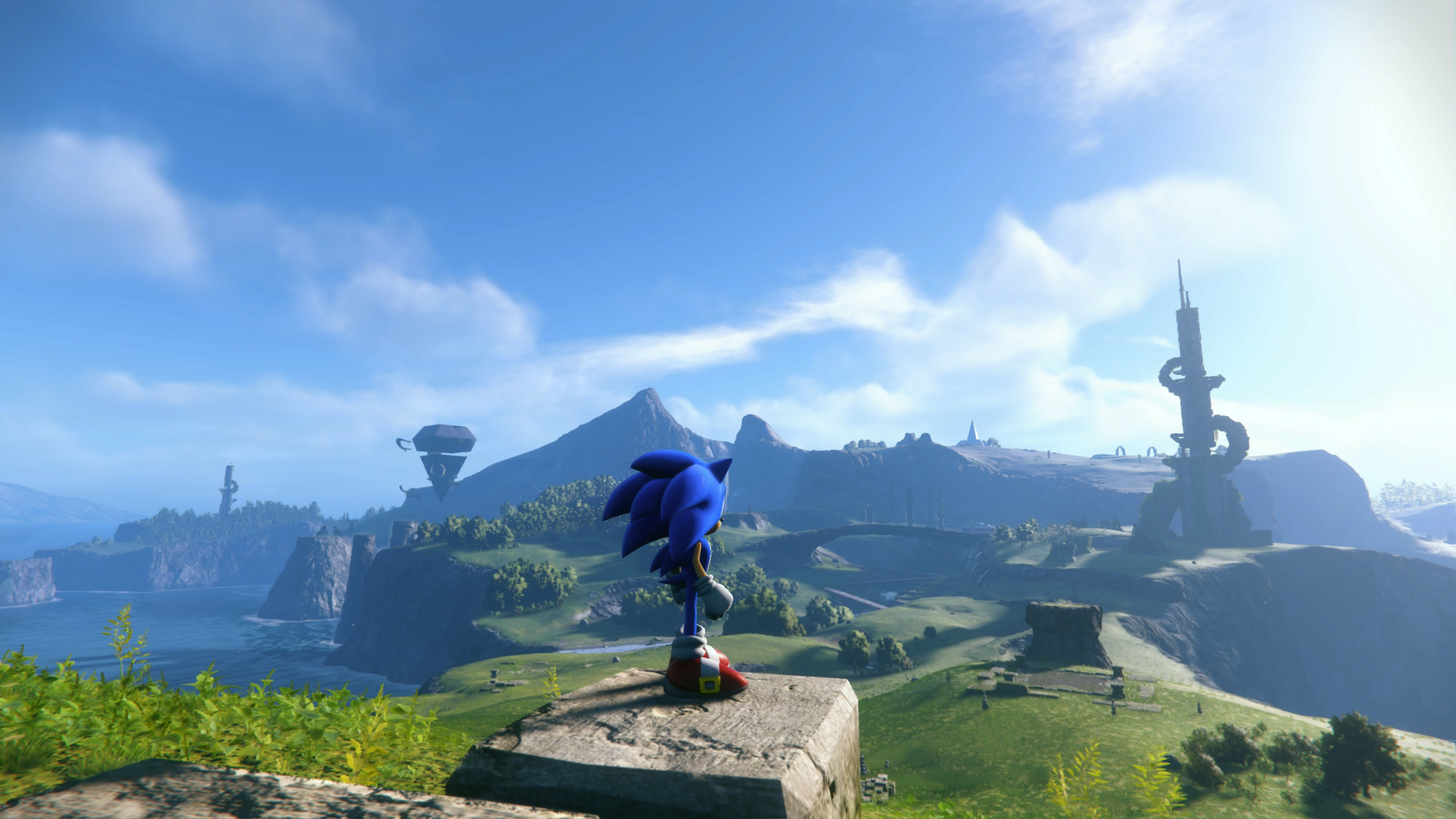
How do you build levels around this kind of movement?
Open-world design is only part of the solution. Sonic Team's secret ingredient - and the key element that brings everything together in a satisfying way - is the fact that the overworld is littered with ramps, rails, bridges, boost pads, and all manner of objects that imbue the open world with a sense of structure. So, rather than putting you in a tunnel with walls you can't cross for an entire stage, Sonic Team has instead dotted the freeform world with bite-sized play equipment that incorporates just enough rigidity to give the environments the appropriate mechanical depth.
When you look at screenshots, you'll see all these random objects floating around in the world. From an art design point of view, it looks both incongruous and just plain silly. As I said earlier, I think the art design is the game's primary weak point. However, when you actually play the game yourself, it's possible to file this visual incongruity to the back of your mind somewhere; that's because the fusion of ultra-flexible freeform open world with highly-structured 'platforms' feels right.
How do you manage a third-person camera in this context?
The open-world design is complemented by a third-person camera that often sits much further away from Sonic than in other games. This means it's much easier to see what's around Sonic and react to obstacles in time. The perspective sometimes reminds me of Super Mario Galaxy, a game that largely solved 3D camera issues through a combination of spherical worlds and a more distant camera perspective. The camera here generally does a good job of contextually shifting based on Sonic's location in the world and the objects he's interacting with. When you jump on some of the floating platforms, for example, the camera might shift to the side, simulating a 2D platformer perspective. What matters is that it seamlessly shifts to and from this perspective as required.
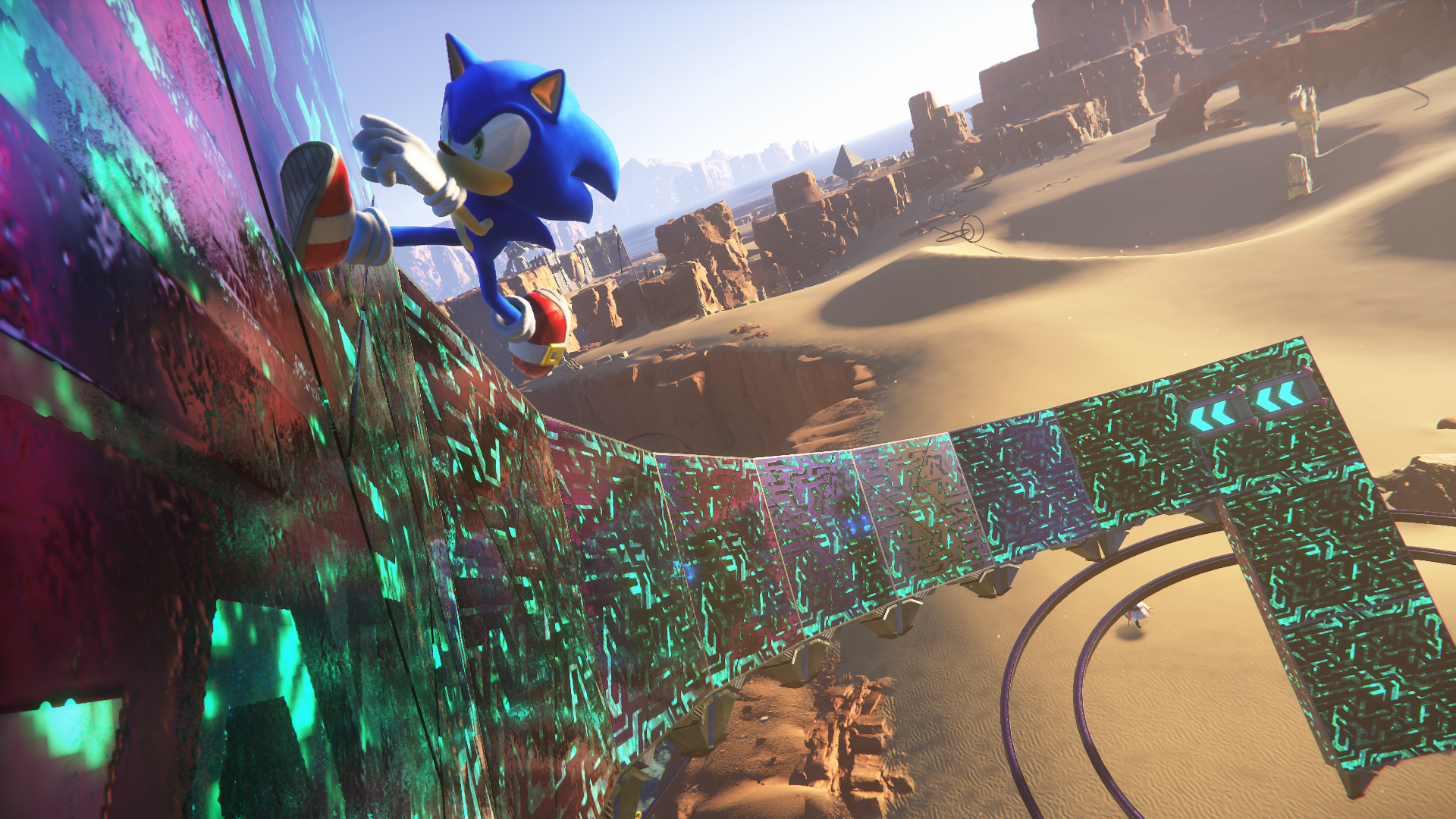
Open-world design is only part of the solution. Sonic Team's secret ingredient - and the key element that brings everything together in a satisfying way - is the fact that the overworld is littered with ramps, rails, bridges, boost pads, and all manner of objects that imbue the open world with a sense of structure.
The beginning, not the end
I've attempted not to simply review Sonic Frontiers here. What I'm really trying to underscore is this core, longstanding challenge of how to design "Sonic mechanics" in 3D. Sonic Frontiers is the one game in the franchise that, after more than two decades, finally comes close to Sonic's Super Mario 64 moment.
Unfortunately, Sonic Frontiers doesn't quite nail the landing. Setting aside my numerous gripes with art and sound design, there are also several technical shortcomings that really hamper the experience (particularly the extremely limited draw distance, which causes platforms to pop in and out of existence right in front of the player). There's also this continued adherence to outdated design that I really wish Sonic Team would have the courage to ditch entirely.
Sonic Frontiers is really two games, not one. One game is the open-world experience I've just spent some time describing. A great deal of the game takes place in this context. But throughout the game, you'll be able to enter specific isolated zones that essentially replicate the "traditional" Sonic Adventure-style stages that are largely on rails.
I wish Sonic Team had the courage to discard these stages entirely.
It's not that these stages are bad per se; I enjoyed them well enough. But Sonic Team are like the game development equivalent of hoarders; they seem to struggle to let things go. One of the reasons the 3D Sonic games have generally been so poor, in my estimation, is that they have tried to do too many things! Rather than honing in on a specific set of mechanics and building a full game around them, Sonic Team has often been guilty of throwing many ideas at the wall without landing any in a satisfying way. Sonic Frontiers is partly successful, I think, because it feels far more focused on a few core ideas than its predecessors. It's gone from being ten games in one to just two.
Now, Sonic Team, it's time to be bold and edit this thing down to just one game. Ditch the "classic" 3D Sonic levels and go all-in on the open-world design that works really well here, and that shows such great promise for the future. And while you're at it, please drop the derivative post-apocalyptic landscape (that looks like it could come from any video game) and give us an open-world Green Hill Zone full of colour, life, and personality.
